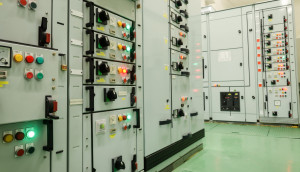 The purpose of a DC power supply is to take an AC current and convert it to DC. Simple! The main components of this are the input transformer, the rectifier, a ‘smoothing’ circuit and a regulator.
The purpose of a DC power supply is to take an AC current and convert it to DC. Simple! The main components of this are the input transformer, the rectifier, a ‘smoothing’ circuit and a regulator.
DC power supplies are used when it’s simply not practical to use batteries to power a circuit. This is the case in situations where a large computer server has been installed, or where telecommunication equipment needs a steady, high quality source of power. DC power supplies can come with built in, in-line backup batteries so that if the AC source fails, the batteries are immediately engaged. The following are the components integral to DC power supply design.
The input transformer
An input transformer has to do two things. It has to change the voltage of the incoming current (usually reducing it) and it has to isolate that incoming current from its own output circuit. The voltage that it produces needs to be as constant as possible, so a transformer where a constant voltage is maintained to within 1% variation under all line conditions is desirable. The transformer, ideally, should be internationalised.
The rectifier – key component of a DC power supply
A rectifier takes the alternating (back and forth) current from an AC supply and passes it through a series of diodes, or switches, that only allow the current to flow in one direction. It does this by not allowing half of the cycle of current produced by the AC generator to flow through it – it cuts out one half of the cycle. But a device called a full-wave bridge rectifier doesn’t just cut out half of the AC flow ‘wave’; it takes advantage of this ‘negative’ part of the cycle too by directing the current through four diodes which keep both halves of the current flowing in the same direction with a series of checks and balances.
Smoothing things out with capacitors
To keep the output voltage of the DC power supply steady, a capacitor is added to the circuit. This acts as a reservoir for the current so that if the voltage dips, it can top up the power output. The output could drop as low as 0 Volts if any component of the AC current makes it through the circuit (this being the point at which the current flow reverses direction). By introducing a capacitor, an average voltage level is maintained.
The regulator – a final refinement
The smoothing out process is further enhanced with a regulator.
This takes the DC current generated by the DC power supply then modulates its output voltage so that regardless of what it receives, or variations in the load it is driving, it delivers a consistent voltage.
This is important for electronic devices that rely on steady voltage.

